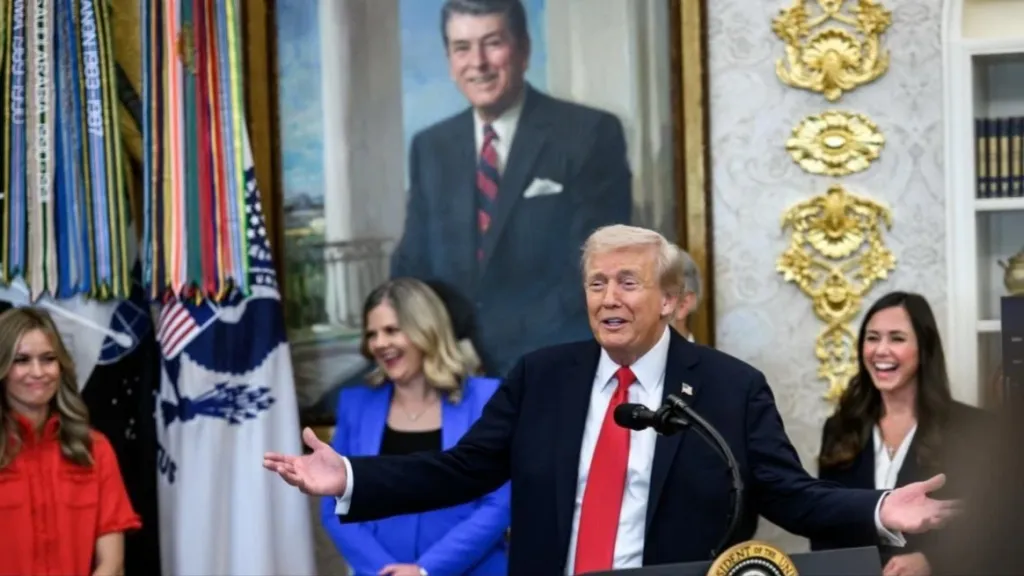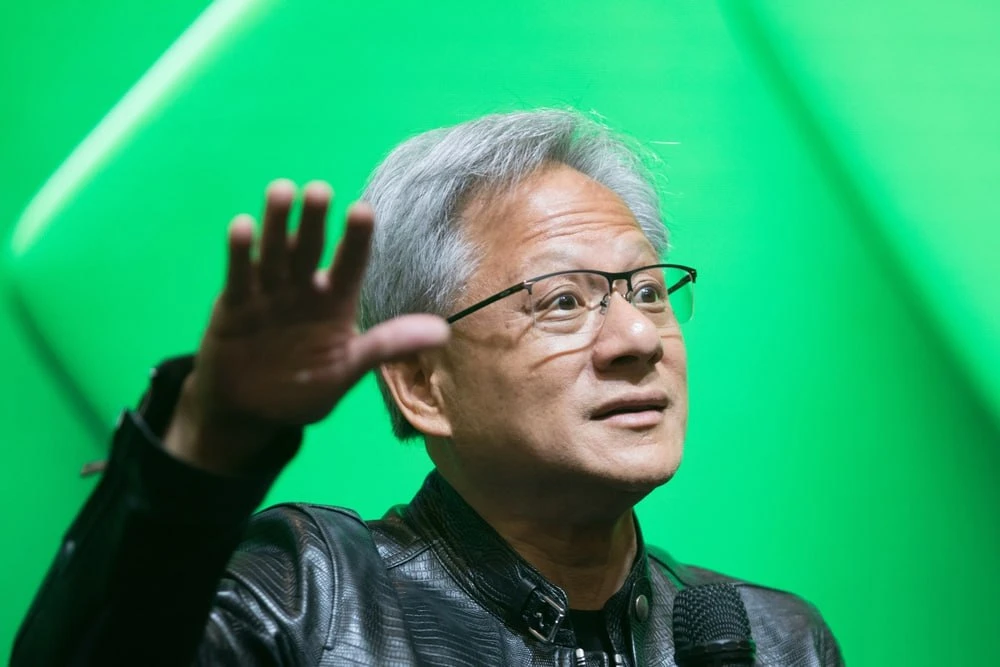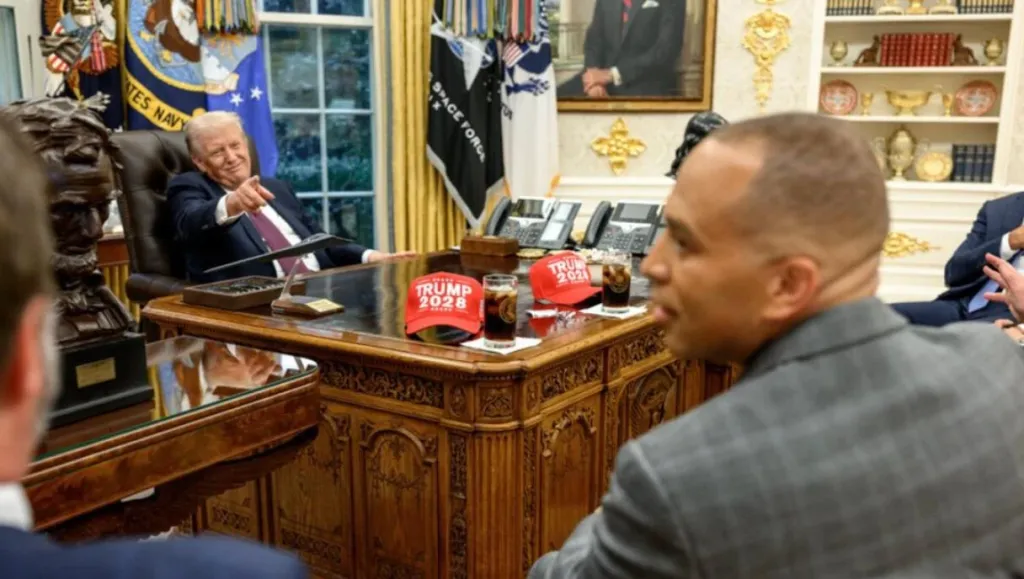MAGA companies: where to look for growth potential

The first nine months of U.S. President Donald Trump's second term have been a driver for a new investment cycle in the U.S. - focusing on AI infrastructure, defense, energy and critical minerals. The result is a select group of companies - informally referred to as "MAGA stocks." Vadim Merkulov, Director of Research at Freedom Finance Global, believes that despite major announcements and stock movements against this backdrop throughout 2025, some key structural drivers remain undervalued by the markets.
Investing in cloud and AI
Project Stargate represents the most significant investment commitment of Trump's second term, a $500 billion AI infrastructure initiative, with SoftBank (9984.T), OpenAI and Oracle (ORCL) as key participants. Oracle, as the Financial Times wrote, has pledged to invest $40 billion to buy 400,000 Nvidia GB200 chips, providing exclusive access to advanced AI hardware. The company is working with other Stargate participants to build a 1.2 gigawatt data center in Texas with plans for a 5 gigawatt facility in Abu Dhabi.
Oracle Corp. kicked off fiscal 2026 with mixed Q1 results. However, the highlight of the report was the phenomenal growth in the order book (RPO) - up 359% YoY to $455 billion - thanks to multi-billion dollar contracts with OpenAI, xAI, Meta, NVIDIA, AMD, and others. Meanwhile, management expects the RPO portfolio to grow to $500+ billion in the coming months. Against this backdrop, the company provided an initial look at the renewed growth trajectory of its cloud business and promised to share details at next month's Investor Day. In addition, multi-cloud integrations c AWS, Azure and Google Cloud showed record revenue growth of 1529% YoY.
Despite the stagnation of the traditional software business, the cloud business -IaaS+SaaS- accelerated growth and Oracle's operating margin exceeded market expectations. This fundamental change will be a long-term diver for the company's stock growth. Moreover, CEO Larry Allison has an excellent relationship with the new administration and Oracle will have its hands free in the next 2-3 years.

Nvidia's $500 billion investment in AI infrastructure within the U.S. over four years, with a commitment to produce AI supercomputers - for the first time entirely domestically - is creating unprecedented demand for specialized facilities and components. I believe that despite its nearly $4.5 trillion capitalization, Nvidia has a chance to double it by 2030. Given the nuance of AI technology and its applications, I believe concerns about the ineffectiveness of large language models are unfounded. Even the "circulation" of AI companies' investments in each other does not create a bubble effect, as it is an obvious bet of companies to reduce the risks of competition - no one knows who will become the leader in AI in 10 years.

Defense and national security
Trump signed the One Big Beautiful Bill Act into law in July 2025, increasing total defense spending to more than $1 trillion for fiscal year 2026 - $156.2 billion more than the Pentagon had requested. Trump's Golden Dome missile defense project, as reported by the Council on Foreign Relations (CFR) think tank, has authorities allocating $12.8 billion, as well as "tens of billions for autonomous systems, nuclear arsenal modernization, and space initiatives." EveryCRSReport , a research resource of the Library of Congress, wrote that $24.4 billion was planned for integrated air and missile defense.
The increase in military spending was funded outside of standard authorization processes, creating uncertainty about whether these investments will become permanent. This keeps defense contractor estimates relatively subdued despite the record spending. Back during the previous administration, the top five contractors - Lockheed Martin, General Dynamics, Northrop Grumman, RTX and Boeing - received 54% of the Pentagon's discretionary, i.e. flexible, defense contracts between 2020 and 2024. They are now in the best position to win new contracts due to fine-tuned production and accelerated procurement schedules. This will be reflected in their financial performance and consequently their stock price.
Energy independence and fossil fuels
The Trump administration's "Unleashing American Energy" executive order prioritizes expanding oil and gas production through opening up federal lands - including the Arctic National Wildlife Refuge, encouraging fracking, and expanding offshore drilling in the Gulf of Mexico and Atlantic. Deregulation efforts include relaxing methane emission rules and simplifying permitting processes.
Despite the political tailwinds, energy companies face investor skepticism over concerns about overproduction causing price volatility. However, the U.S., by exporting liquefied natural gas, is positioning itself as a key supplier for Europe and Asia seeking alternatives to Russian energy. Among the beneficiaries are:
- Occidental Petroleum, which received major preferential treatment, including tax breaks and access to new projects on public lands;
- Energy Transfer Partners has been a key beneficiary of the expansion of LNG export projects, with the company increasing profits amid the removal of restrictions and accelerated permitting;
- Chevron and ExxonMobil, two of the largest companies in the U.S. active in U.S. and export projects, receive significant fee reductions when producing on public lands.
However, this list will suit conservative investors who expect to receive a steady cash flow in the form of high dividends.
Critical minerals and rare earth metals
Trump's October 2025 confrontation with China over rare earth elements - which are vital for electronics, vehicles and semiconductors - caused a $2 trillion one-day market loss and exposed the vulnerability of global supply chains.
MP Materials operates the Mountain Pass mine in California, currently the only active rare earth mine in the United States, producing neodymium and praseodymium needed for high-tech industries. The company has partnerships with the Department of Defense and Apple. This is an industry leader that will be strategically positioned for U.S. national security. On the other hand, there are new projects that are being highlighted by the President's administration itself - Lithium Americas Corp. has been granted a government stake in the company, which is a good signal for lithium development permits.
Shares of rare earth companies rose amid tensions between the US and China in mid-October 2025, but most projects remain at the pre-production stage with uncertain timelines. The market discounts implementation risks and capital intensity, so we will see sharp jumps in capitalization among such companies as specific targets are met.

Back to the U.S.A.
Major commitments include Apple's $600 billion investment in U.S. manufacturing and workforce training, Micron Technology's $200 billion expansion into advanced memory chips with new facilities in Idaho and Virginia, and IBM's $150 billion investment over five years. TSMC is expanding U.S. operations as part of a broader semiconductor manufacturing comeback.
The Kearney Reshoring Index - which measures how aggressively U.S. companies are bringing production from Asian countries back to the U.S. - has actually gone negative under Trump. Before him, in 2022, U.S. domestic manufacturing production grew faster than imports from 14 Asian countries with low labor costs.
Despite CEOs showing more commitment than ever before, this year's report saw the reshoring index return to negative territory, driven by the major drivers of global trade - supply and demand. This decline should not be interpreted as a rejection of reshoring, just that expectations for this strategy should be tempered by market realities
In April 2025, the CNBC Supply Chain Survey found that 57% of companies cite cost as a major barrier - most estimate that internal supply chains will cost at least twice as much as current costs. While 81% of CEOs plan to approach supply chains, only 2% have finalized reshoring plans. The Reshoring Initiative is tracking 20-30 major announcements worth billions of dollars in the pharmaceutical and automotive industries, but companies are delaying decisions amid turbulent tariffs.
In my view companies that successfully reshoring will gain a significant competitive advantage in the local market, but market skepticism keeps valuations depressed, and this creates opportunities for investors who have yet to participate in growth.
From January through October 18, 2025, the S&P 500 Index rose 13.3%, but experienced significant volatility. Investment banks and rating agencies have noted that despite loud promises, actual investment and economic growth have not yet changed significantly - we are seeing a similar picture overall. Markets are waiting for tangible results before re-rating stocks higher and this leaves room for growth. Therefore, the combination of massive capital commitments (over $10 trillion of announced foreign and domestic investment), structural policy support and sustained market skepticism creates an asymmetric risk-return profile for companies that successfully implement MAGA's policy priorities.
This article was AI-translated and verified by a human editor
